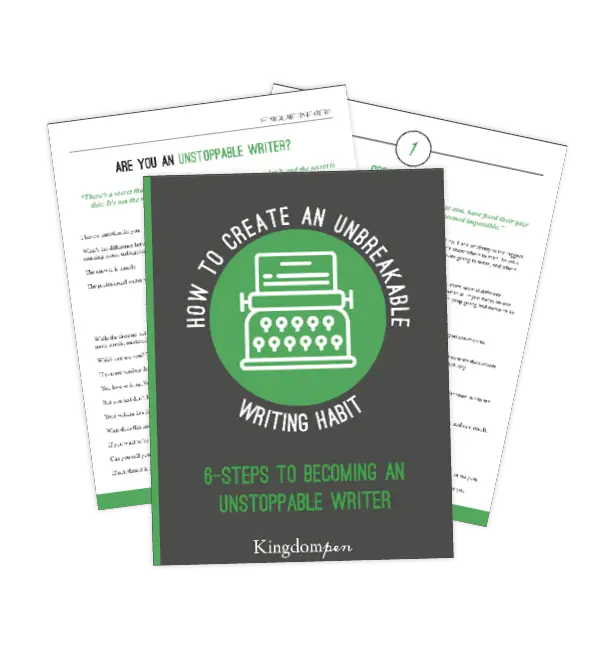By Grace A. Johnson
Most of y’all know that I’m a diehard pantser. I can’t help but wing my stories, jumping headfirst into the first chapter without properly planning each chapter, each scene, each paragraph. A lot of us see pantsing as something only hobby writers would do, something that will leave you burned-out, with an inconsistent story and threadbare plot, having never reached The End. And if you do manage to type those last few words, you’ve got a boatload of editing to do, and at that point, you may as well just rewrite the whole story!
Sounds about right, doesn’t it?
Well, as strange as it may seem, I have successfully pantsed not one but three full-length novels (one of which is triple-length at 210k words XD). And it’s not half as hard as it seems, so I’d like to share with y’all—both my fellow pantsers and you lovely plotters out there—how you can write by the seat of your pants without sacrificing your entire story!Know & Develop Your Characters
You, like me, probably pants because you’re bad at coming up with strong plots and you stink at outlining. It’s boring and time-consuming and honestly too much work...and by the time you’ve written that 20-page outline, you don’t even wanna write the story anymore! Am I right? And when you do start to write, you’d much rather focus on your characters or your prose, wouldn’t you?
Even though it feels like you’re breaking the writer’s code and shunning your plot, you’re not! There’s nothing wrong with preferring characters or prose over plot; in fact, there’s a reason, and it can be used to help create and enrich your plot rather than detract from it!
It all starts with knowing and developing your characters. If you find you lack the willpower to plot, my money’s on you spending your time scrolling through Pinterest, listening to music, and taking personality quizzes for your characters. And this is just the beginning to creating deep, authentic characters—which, trust me, is much easier than plotting!
Of course, you could download a character template and fill out each section just so...or you can start by collecting inspirational images, lines of poetry or songs, creating moodboards, sketching your character, or just jotting down your thoughts about them! As long as you’re getting to know your character, learning about them, and giving them multiple layers and dimensions, you’re one step closer to having a great plot...that was never plotted. XD
Just how can that be? you ask. Well, here’s how characters can enhance—and instigate—your plot:
When you know your characters well enough to know how they act, what their goals are, and what they would do in certain situations, you’ll be able to come up with (or further an already existing) plot that’s engaging and believable!
Discover Your Story’s Purpose
There’s something more important than the beginning, middle, and end of your story. (I hear your gasp of shock. Gimme a second to explain.) After all, a lot of short stories and flash fiction don’t have definable beginnings, middles, or ends...so what’s the point? What makes them a story?
EXACTLY! When you ask yourself “What’s the point of my story? Why am I writing it? Why is it worth my time and dedication? Why would someone want to read it?” you’ll have better reasons for writing than just a three-act structure. The purpose of your story applies to your themes (i.e., love, forgiveness, friendship), your messages (i.e., love conquers all), and your plot (i.e., a young girl discovers the power of love).
The purpose of your story is what will drive you to complete it—not your perfectly scheduled plot.
List Your Main Events
Note that I said list and not outline. A list can be as detailed or as vague as you want it to be; its purpose is giving you something to refer back to when you forget what you want to include in your story.
Which is what I mean by main events. It doesn’t have to be your inciting incident, climax, and resolution—it just has to be two or three (or five or seven) things (doesn’t even have to be events, per se) that you want to see occur or be included in your story.
For example, in my debut novel Held Captive, my main events were
(1) Rina gets captured by Xavier,
(2) Rina meets her father,
and (3) Rina and Xavier fall in love.
I never wrote an outline any deeper than this, because just having these three things in mind helped me figure out how my entire novel (it’s 75k words long) would progress. Not to mention, I was able to keep my end goal in mind and focus just on writing these three things instead of weaving in too many plotlines.
And these events are not constrained to specific chapters. The first takes place in chapters 3 and 4, the second occurs in chapter 16, and the third spans from chapter 4 to the end of the book! Without a strict outline, I felt more free and creative, so I was able to flesh out these three events and let them unfold over multiple chapters, making my story fuller and helping it flow better. (Not that Held Captive is perfect, but y’all get my point.)Keep Track of Your Progress
Somewhere along the way, I began keeping a log of each chapter and what happened in it (mainly because I also needed to keep track of what day it was in each chapter so that I could reference them).
This ended up becoming more a reverse outline, and even though it seems kind of pointless, it helped me a lot in keeping track of all that had transpired in my story and allowed me to refer back to previous chapters a lot more easily. Plus, it makes editing a bit smoother too, since you know what happens when and where!
When the time for editing or writing the next draft comes, you can use this reverse outline as a regular outline! You won’t have to push yourself or figure everything out before writing, and you’ll feel less tied to that outline since you’re rewriting it anyway! (That does make sense, right?)
In Conclusion:
Pantsers typically get a bad rap for winging their stories and not have a strict outline, but when you know and develop your characters, discover your story’s purpose, come up with a few main events, and keep track of your progress, you’ll find the pantsing process running as smoothly as the plotting process.
Not to mention, you’ll have more room for freedom, creativity, ingenuity, and better pacing!
So give it a go! With your characters and themes in mind, start writing and see what happens!
Grace A. Johnson
Grace A. Johnson is a teenage Christian fiction authoress of the Daughters of the Seven Seas series and a smattering of short stories and novellas, as well as the founder of Sky’s the Limit Literary Journal and fiction editor with S&J Editors. You can learn more about her creative endeavors and connect with her at www.graceajohnson.com.



Ooh!
I was beginning to ‘worry’ that perhaps I wasn’t giving as much attention to plot as a storyteller should, especially when thinking about my backburner ideas, but this really inspired and encouraged me to find the story through the characters. Thank you so much for sharing this, Grace! I can’t wait to give it a go with my new ideas.
And as always, I love your writing style in your posts 😉
Trust me, I’ve been there and I know the feeling! I’m glad I could help, girl! You are SO welcome!! Best of luck!
Aww, thank you! 😀
You kidding? I only outlined my latest WIP because my dad is helping me with it and wanted to create a plot first. Everything else, I wing it! And your novel sounds cool!
That’s what I’m talkin’ about, girl! XD Thanks! 😀
Ooo! That was really good! 💗💖
Grace A. Johnson’s take on successful pantsing is a breath of fresh air. The emphasis on character development and understanding a story’s purpose challenges the stigma around writing without a strict outline, offering a liberating approach for writers seeking a balance between structure and creative spontaneity.